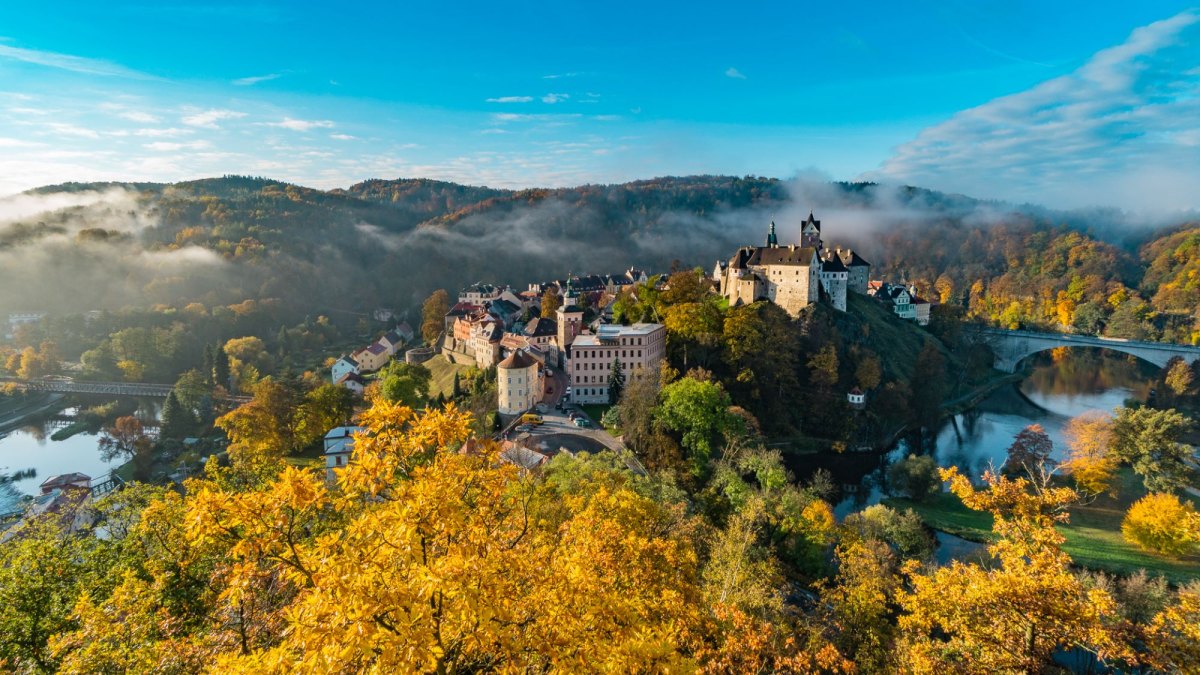Standing at the rocky top of a spur, around the entire circumference of which the Ohře River flows, the castle was built as a royal border stronghold to fend off expanding Cheb ministeriales probably during the reign of King Vladislaus II in the second half of the 12th century. Written records first mention the castle only in 1234. Since its early beginnings, the castle was frequently visited by Bohemian sovereigns with their families and hosted significant diplomatic negotiations. The original twostorey Romanesque castle complex consisted of isolated buildings – a prismatic tower, a palace, and a rotunda. During the reign of King Ottokar II, the castle was rebuilt in Early Gothic style. When the House of Luxembourg ruled Bohemia, the castle served as their temporary seat on numerous occasions. Reconstruction in Gothic style presumably commenced towards the end of the reign of King Charles IV, after a devastating fire in 1352, and largely continued during the rule of King Wenceslaus IV. A stately palatial building known as the Margrave's House and apparently also an outbuilding known as the Headman's House were built in this period. The castle fortification was further reinforced and its entrances were secured by castle gates. In 1434, Emperor Sigmund pledged the castle to Kašpar Šlik. Three generations of the Šliks (1434–1547) contributed to the Late Gothic and Renaissance conversions of the castle, which was transformed into a stately residence and the seat of the administrative rule of the region. After the Battle of White Mountain, the castle was confiscated and it fell into the possession of the town. Its importance began to decline, it was gradually losing both artistic and architectonic value and its fate was ultimately sealed by an insensitive conversion of the entire complex into a state prison (1797–1821). During the reconstruction work, the Stone Room was demolished, the top floors of the palatial buildings were torn down, and the interiors were converted into prison cells. When the prison was closed down in 1948, the castle deteriorated for decades until becoming so dilapidated that it had to be closed to the public for several years. Since 1992, when Loket Castle was returned to the town of Loket, the entire castle complex has been undergoing gradual renovation, as a result of which thousands of visitors from around the world can admire the renewed beauty and majesty of the castle towering over the surrounding countryside.
Loket castle
Monuments
Jewel in the bend of the river, Loket Castle





